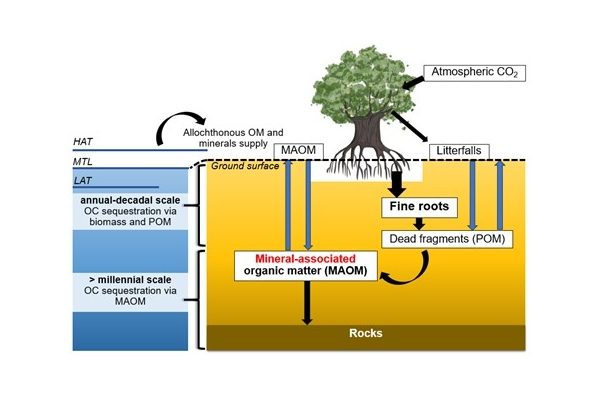ORGANIC CARBON SEQUESTRATION IN COASTAL ENVIRONMENTS
Blue Carbon Ecosystems (BCEs), such as mangroves, rank amongst the most effective natural carbon sinks. Enhancing blue carbon burial offers a solution to mitigate anthropogenic climate change, which requires a comprehensive understanding of factors that govern the long-term organic carbon (OC) sequestration in coastal environments. Primary OC production via photosynthesis and the subsequent formation of mineral-associated organic matter (MAOM) in sediment — mainly formed by chemical bonding between minerals and microscopic/soluble organic matter (OM) — are key mechanisms for OC sequestration. The turnover of particulate OC is relatively short (annual-decadal timescales) as they are labile and easily decomposed, whereas MAOM can persist over millennia due to mineral protection hindering decomposition yielding long-term OC sequestration. Additionally, in situ OC production, below- and above-ground OM exchange, relative sea-level change, and mineral composition all influence carbon export budgets and sequestration in BCEs at different timescales; however, constrains on these processes remain limited. Accordingly, my project aims to better quantify these factors to facilitate accurate assessments and projections of OC sequestration in BCEs.
Additional information: Miss QIN Yonghui, u3009852@connect.hku.hk










